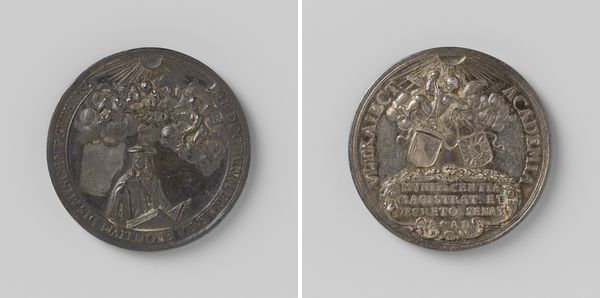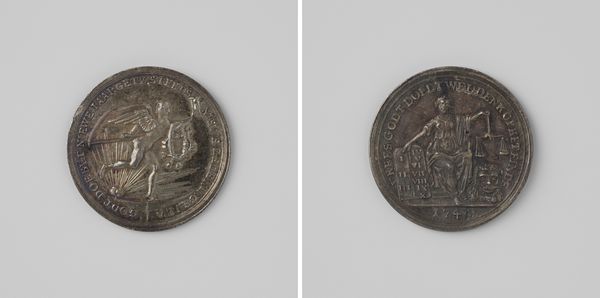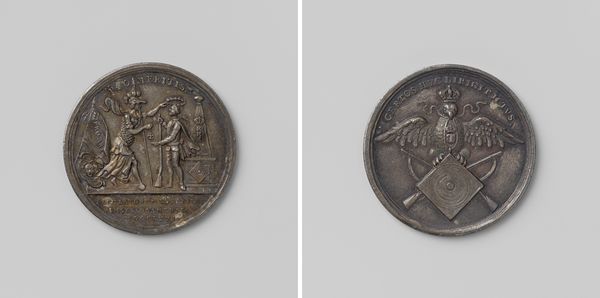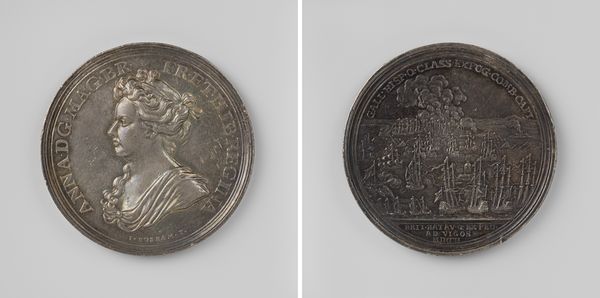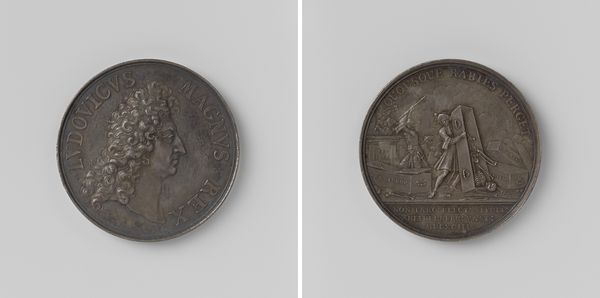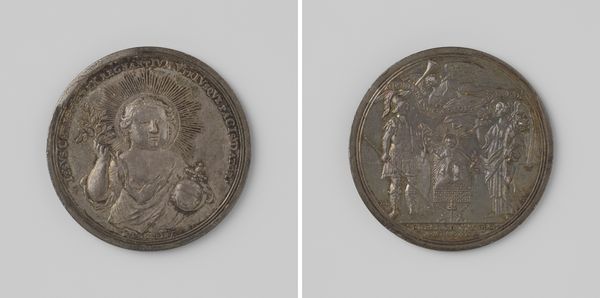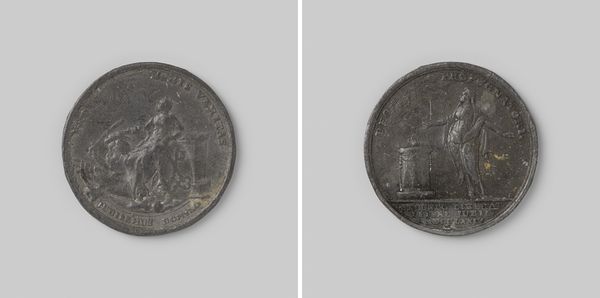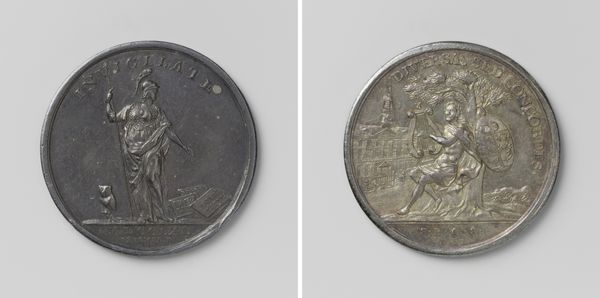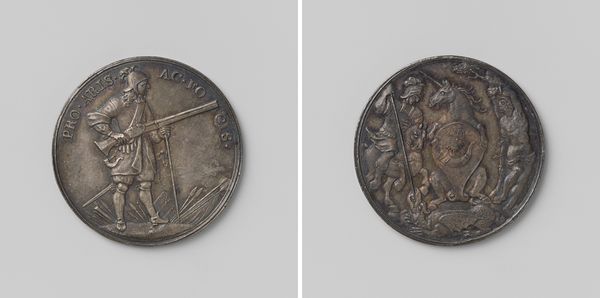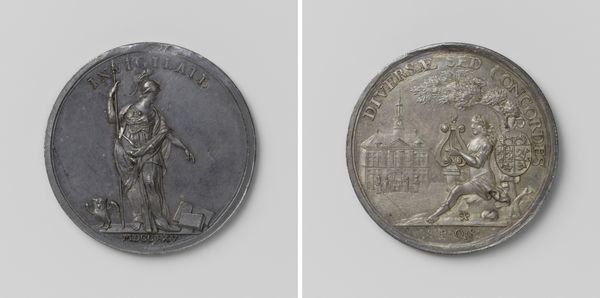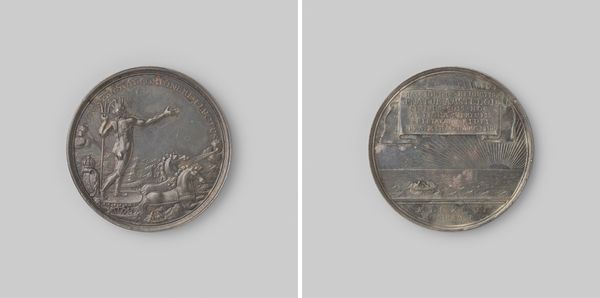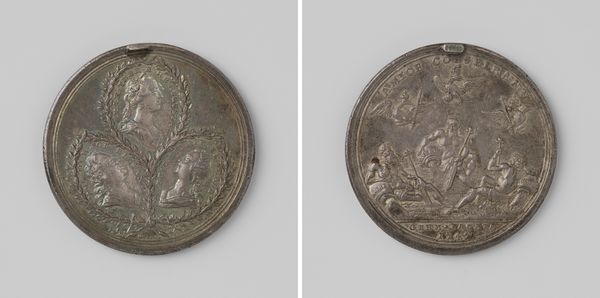
metal, relief, sculpture
#
portrait
#
baroque
#
metal
#
sculpture
#
relief
#
sculpture
#
history-painting
Dimensions: diameter 5.7 cm, weight 81.46 gr
Copyright: Rijks Museum: Open Domain
Curator: Let's discuss this metal relief from approximately 1700 titled "Stillen van het oproer te Brussel" or "Quieting the Riot in Brussels," currently held at the Rijksmuseum. It’s by an anonymous artist. What are your initial impressions? Editor: My immediate reaction is one of observing detailed mastery. The use of such limited space to create this relief and give the impression of crowd control in a way that brings focus to all of the detail is an exciting technical achievement. Curator: Agreed. Consider the backdrop against the events of that time period in Brussels. There's the long shadow of Spanish rule and growing unrest among its working class because they're struggling with poor living conditions. How might the imagery used to portray that oppression play on the surface of that tension and turmoil in ways that amplify contemporary social and political viewpoints about what power truly looks like in practice versus theory? Editor: Note the contrast between the crowded backdrop and single authority being featured with great posture. It evokes ideas of balance, order, but perhaps falsely so because it uses depth to create a unique story where we focus primarily on this subject and not all the other components that give context to our authority's story. Curator: Absolutely, and consider the symbolic weight embedded within each allegorical figure or carefully chosen scene. It feels crucial, isn't it, that we acknowledge not just what's represented, but how it relates directly back towards larger questions around power dynamics in society today, given similar struggles happening elsewhere around access rights for basic resources Editor: That makes me reflect further upon the choice of metal. Consider how such an object gives unique, shiny tonal contrasts to draw specific details out using both positive and negative space effectively to capture light effectively, which elevates its form both symbolically and aesthetically by giving certain subjects importance through luminosity against what otherwise could remain unseen. Curator: Indeed. The act of imprinting onto metal during conflict adds further layers connecting historical anxieties about status during the period after these social changes when Brussels transitions culturally. What narrative purpose did using rigid material create for communicating nuanced details within public consciousness amidst all social change occurring throughout the baroque movement within Belgium/what-was-then Flanders, given religious tensions playing out around this work's cultural production time? Editor: As our experience with this piece closes, its technical merits offer viewers plenty. One should observe further to notice skillful utilization depth combined across diverse symbolic details. It reveals more regarding artistic brilliance while opening one’s interpretations, encouraging questioning narratives implied by surface appearances given power structures illustrated! Curator: This sculpture serves not merely memorialization/art but something deeper indeed - serving catalyst prompts more insightful reflection social orders continue to resonate worldwide amidst present sociopolitical realities affecting working class individuals worldwide!
Comments
No comments
Be the first to comment and join the conversation on the ultimate creative platform.
